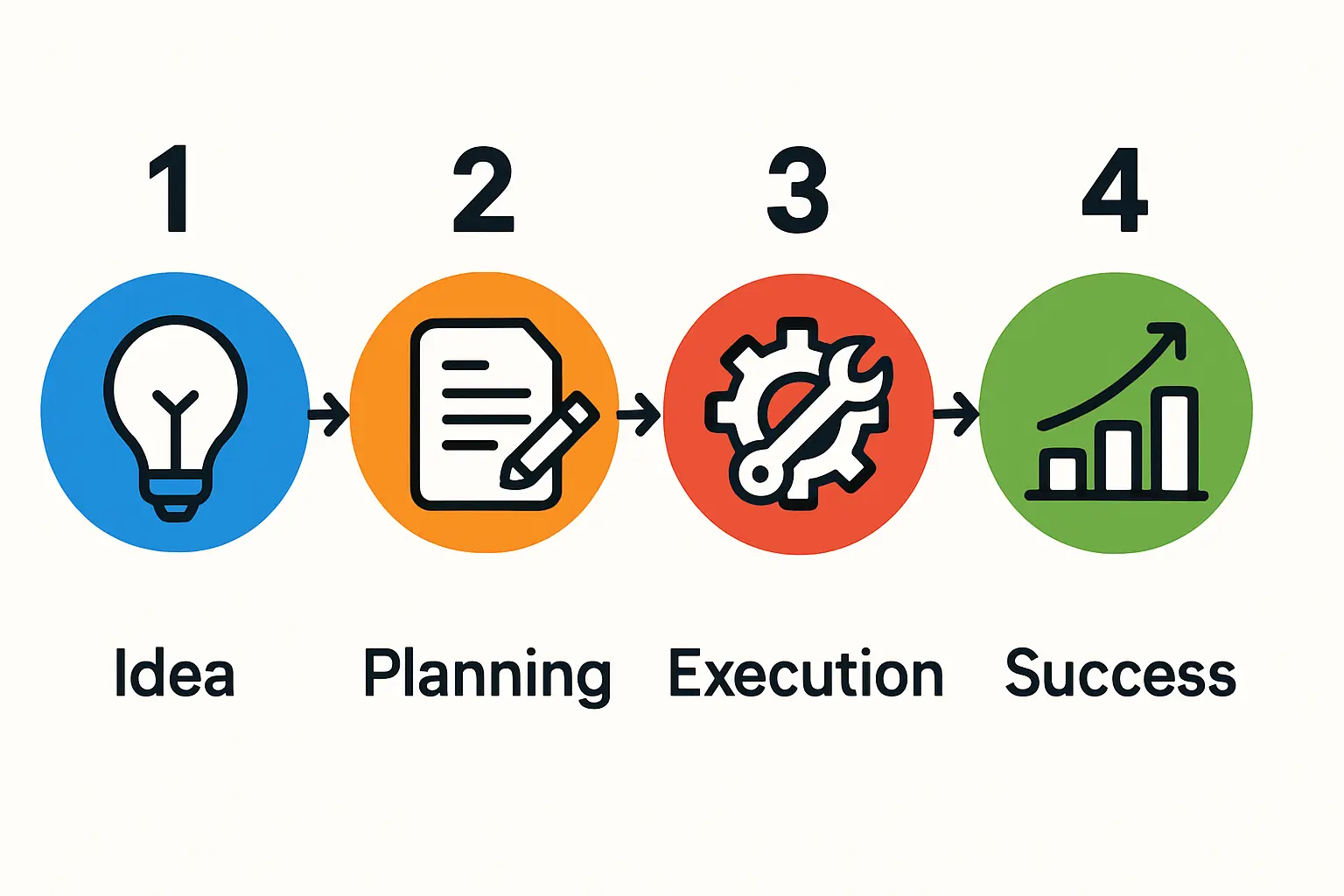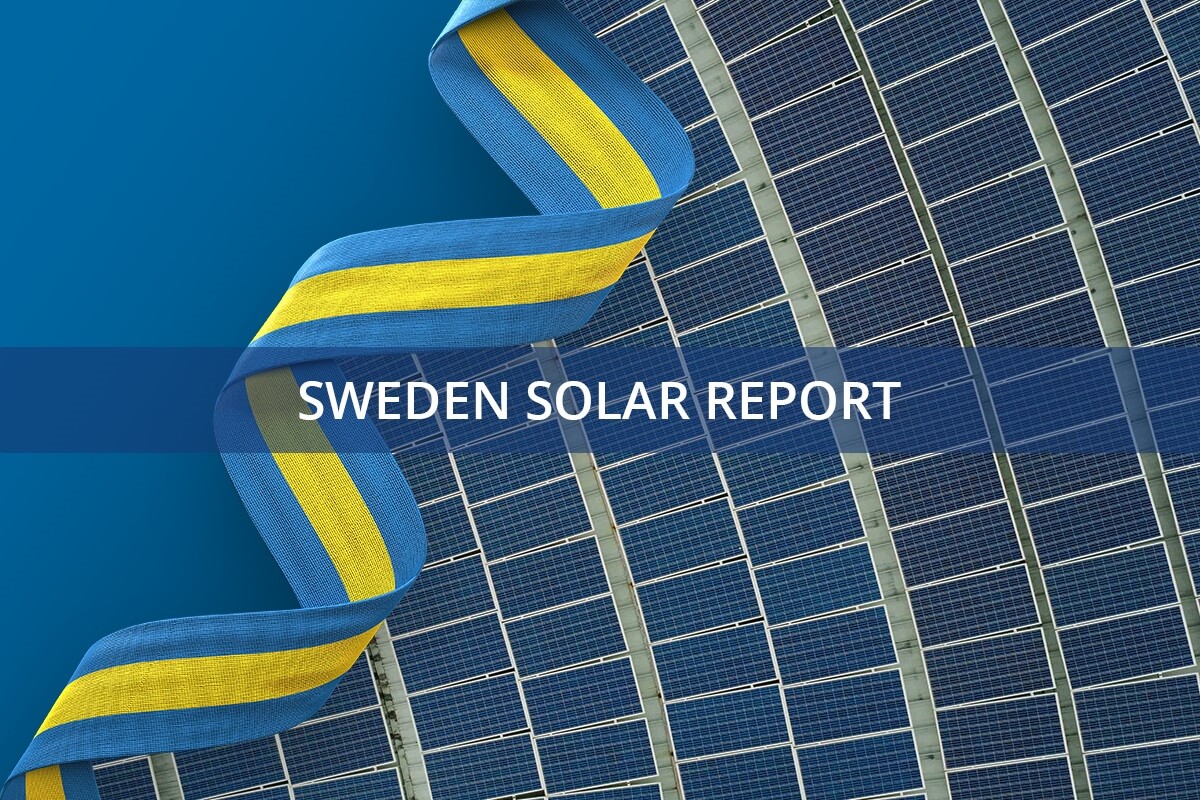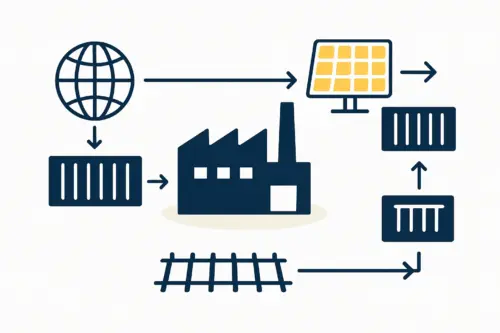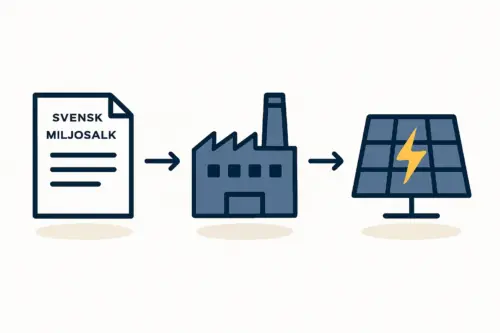When businesses consider entering the solar manufacturing industry, their focus naturally turns to regions with high solar irradiation and year-round sun. However, a significant and profitable market opportunity lies in a region many might overlook: the snow-covered landscapes of Northern Europe.
The demand for solar energy in countries like Sweden is growing at an unprecedented rate, driven by a desire for energy independence and supportive government policies. This growth presents a unique challenge—and, for the discerning entrepreneur, a distinct business opportunity.
Standard solar modules are not designed to withstand the immense weight of heavy, compacted snow, which creates a demand for specialized, high-snow-load modules. This is a niche market where quality and engineering command a premium over mass-produced alternatives. For a new manufacturer, focusing on this segment can be a strategic entry point into the European solar market.
The Surging Demand for Solar in Northern Climates
Contrary to common assumptions, the Nordic region is experiencing a solar boom. In 2023 alone, Sweden’s installed solar capacity grew by an estimated 22%, reaching a total of 3 GW. This expansion is not limited to residential rooftops; commercial and industrial installations are becoming increasingly common as businesses seek to stabilize their energy costs.
Several factors are driving this surge:
- Energy Security: Recent geopolitical events have underscored the value of energy independence, prompting governments and private enterprises alike to invest in local, renewable energy generation.
- Favorable Conditions: While winter days are short, the long, sunlit summer days provide excellent generation potential. Cold, clear winter conditions can even improve panel efficiency.
- The Critical Challenge: Snow Load: The primary technical hurdle in this region is the mechanical stress caused by snow. A standard solar panel might be rated to withstand a pressure of 2,400 Pascals (Pa). In parts of Northern Sweden, however, snow loads can easily exceed 5,400 Pa, and in some alpine regions, they can reach 8,000 Pa or more. This is equivalent to several hundred kilograms of weight pressing down on each square meter of the module.

A standard module under such weight is at high risk of micro-cracks in the solar cells, frame deformation, or even complete structural failure. This is where the business opportunity emerges.
Understanding Mechanical Load and Certification
To serve this market, manufacturers must produce modules that meet specific technical standards. The key certification is outlined in the International Electrotechnical Commission’s standard, IEC 61215: ‘Terrestrial photovoltaic (PV) modules – Design qualification and type approval.’
This standard specifies a series of stress tests, including the crucial mechanical load test. During this test, a uniform pressure is applied to the front and back of the module to simulate the forces of wind and snow.
- Standard Modules: Typically certified for a downward pressure (snow) of 2,400 Pa and an upward pressure (wind) of 1,600 Pa.
- High-Snow-Load Modules: These are engineered to pass tests at 5,400 Pa or higher. Achieving this certification is a significant engineering challenge, requiring specific adjustments throughout the solar panel manufacturing process.
These numbers are not just technical specifications; they are the foundation of a product’s bankability and reliability in challenging climates. A client investing in a multi-million-euro solar farm in Kiruna, Sweden, cannot afford to risk using modules that are not certified for the local conditions.
Ready to make big Profits?
The solar Industry is Booming
WE HELP NEWCOMERS to the solar industry start their own solar module production line. Customers can make BIG PROFITS by selling modules and finding investors, without wasting money and time on things they don't need!
Key Manufacturing Adjustments for High-Load Modules
Producing a module capable of withstanding heavy snow requires more than just minor tweaks. It involves fundamental changes to the materials and design, which in turn influence the selection of solar module manufacturing equipment.
Stronger Frames
The aluminum frame is the module’s primary structural support. For high-load modules, manufacturers must use thicker, reinforced frame profiles. This often involves more complex cross-sections and stronger corner key connections to prevent twisting and bending under load.
Thicker Front Glass
The front glass is the module’s first line of defense against downward pressure. While standard modules may use 3.2 mm thick glass, high-snow-load modules often require 4.0 mm tempered glass. This seemingly small increase in thickness significantly enhances the module’s rigidity and resistance to flexing, a primary cause of cell micro-cracks.
Additional Support Bars
For modules intended for the highest load zones (above 6,000 Pa), some designs incorporate one or two support bars on the back. These bars are bonded to the backsheet and frame, providing additional cross-bracing to prevent the module from bowing under extreme weight. Based on experience from J.v.G. Technology GmbH turnkey projects, this design is particularly effective for larger format modules.

The Strategic Advantage for New Manufacturers
Entering a mass market dominated by large, established players can be daunting. The high-snow-load segment offers a more strategic path to profitability for a new enterprise.
- Higher Profit Margins: Specialized modules command a higher price per watt. The added material and engineering costs are more than offset by the premium that customers are willing to pay for certified reliability.
- Reduced Competition: Fewer manufacturers have the engineering focus and quality control processes required to produce and certify these modules consistently. This creates a less crowded marketplace.
- Brand Reputation: Successfully serving a demanding, high-specification market builds a powerful reputation for quality and engineering excellence—one that can be leveraged to enter other specialized markets, such as modules for highly corrosive marine environments or extreme desert heat.
For an investor planning a turnkey solar manufacturing line, specifying the capability to produce high-load modules from the outset is a strategic move that can unlock access to valuable niche markets across Northern Europe, North America, and other alpine regions.

Frequently Asked Questions (FAQ)
What exactly is a Pascal (Pa) in the context of snow load?
A Pascal is a unit of pressure equal to one newton of force per square meter. For practical understanding, 5,400 Pa is roughly equivalent to a distributed weight of 550 kilograms (about 1,200 pounds) over one square meter of the module’s surface.
Is this market limited only to Sweden and the Nordics?
While the Nordic region is a prime example, the demand for high-snow-load modules exists in any region with significant winter snowfall. This includes the Alpine regions of Central Europe (Austria, Switzerland), mountainous areas of North America (e.g., the Rockies, Sierra Nevada), and parts of Japan.
How much more does it cost to manufacture a high-snow-load module?
The additional cost per module is primarily driven by the thicker glass and a more robust frame. Typically, this can increase the material cost of a module by 10-15%. However, the final sale price can often be 20-30% higher than a standard module, offering a healthy margin for the manufacturer.
Does the manufacturing process require completely different machines?
Not entirely, but modifications and specific machine choices are necessary. For example, the framing station must be able to handle the thicker, more robust frame profiles. The quality control systems, particularly the electroluminescence (EL) testers, must have a high enough resolution to detect the subtle micro-cracks that can be an early indicator of mechanical stress failure.
Conclusion: A Focused Path to a Premium Market
The growing solar market in Northern Europe presents a compelling case for specialized manufacturing. Instead of competing on volume and price in the mass market, new entrants can establish a strong, profitable foothold by delivering the engineered solutions these challenging environments demand.
Producing high-snow-load solar modules is a business built on quality, reliability, and trust. For entrepreneurs with a long-term vision, it represents a strategic opportunity to build a respected brand in one of the most dynamic and essential industries of the 21st century. The path begins with understanding the specific technical requirements and aligning the factory’s capabilities to meet this clear and growing market need.






